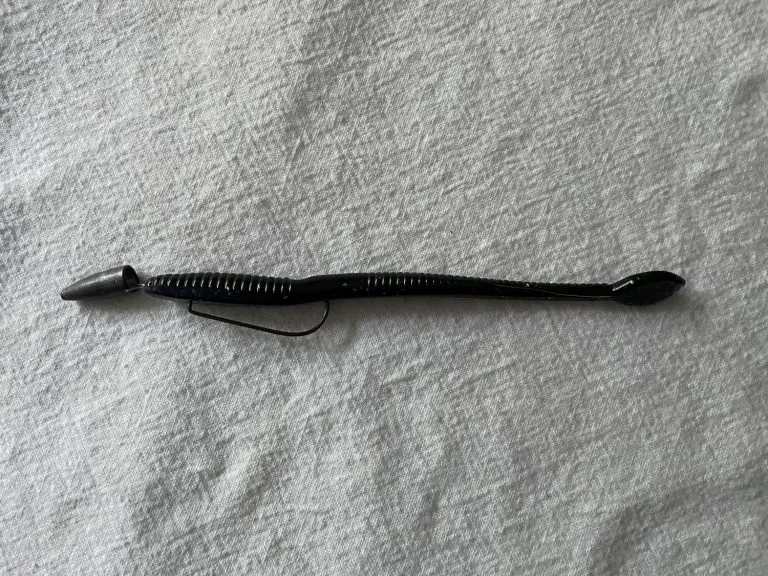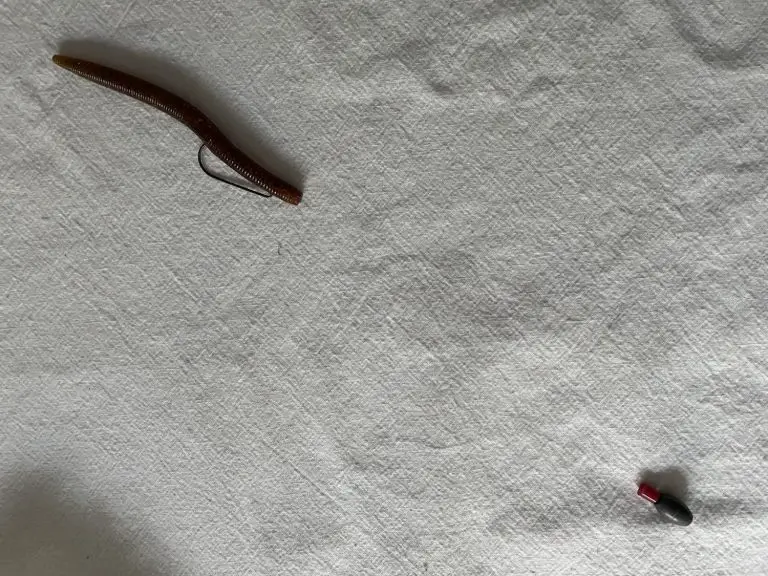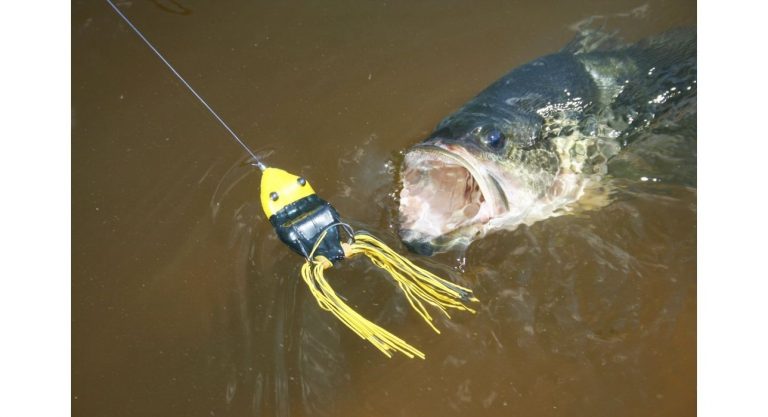How Often Do You Feed Bottom Feeders
Many fish are categorized in fishing by where in the water column they feed. A catfish, for example, only feeds on things that exist on the lake bottom so are called "bottom-feeders". But something like a shad feeds mostly on insects, plankton or small fish that are usually found near the surface. So they're called "top feeders".
But all this really means is – do I put my bait on the bottom of the water or the top of the water to catch a fish? For all kinds of fish – including bass – the answer is both. Bass are both bottom feeders and top feeders. So you should be fishing on top, in the middle, and the bottom of the water to catch them.
But how do you know when bass are feeding on the top of the water versus the bottom? Well that's a complicated question… let's get into it!
What bass eat on the bottom
Bass are likely to feed on the bottom when eating crustaceans, especially one of their favorite means – a crawdad. This is why you will find many lures that imitate crayfish like the Zoom Ultravibe Speed Craw, or really any creature/craw style soft plastic.
Worms, leeches, and other species are also found on the bottom of lakes and rivers and can be enticing meals for bass as well. Look for soft plastics like ribbontail worms, grubs, and tube baits if you want to mimic these species.
Sometimes bait fish also sit on the bottom feeding on little insects, and make a tasty meal for a bass. Not many lures mimic this – but you can fish a ned rig very effectively in many lakes and ponds to catch bass.
When bass feed on the bottom
The first thing you need to know to determine if bass will eat on the bottom, is to know if there are things for them to eat on the bottom. Most fisheries will have crayfish, worms, leeches, and the like. But not all do. So if you are fishing a farm pond without crawdads, don't expect to use a craw type bait and catch many fish.
Once you've determined the availability, knowing the times that bass feed on them heavily is helpful. First, know when the bottom-dwelling creatures are alive and active. Worms don't appear much in the dead of winter – so don't expect to catch bass on them.
But crawdads are still alive in winter – and the cooler water temperatures make them slow and easy prey for bass. So in winter, crawdad type lures are actually very effective.
After you know if the bottom-dwelling creatures are active or alive, then figure out if bass actually want to eat them. In general, bass will eat them at all times of the year but are most prone to bottom feed when the water is extremely hot or extremely cold.
This is because bass have an optimal water temperature which is around 70 degrees. When it's hotter or colder, they will purposefully expend less energy and sit deeper in the water, where the water temps are usually closer to what they like.
So they're already near the bottom – and they don't want to expend the energy to chase their prey around. Bottom-dwelling creatures that don't move quickly are the ideal thing to eat at these times. So fish on the bottom when it's really hot or really cold.
The best rigs for bottom fishing bass
There are many rigs that fish on the bottom successfully, but the one standard that you'll need to know is the texas rig.
The texas rig is simply a hook with a bullet weight placed in front of it. The weight pushes the bait (threaded on to the hook as seen below) to the bottom. Then you can lift your rod tip up to "hop" the bait around. This is meant to mimic a craw, worm, or any creature moving around the bottom of the water.
The reason a texas rig is so great for bottom fishing is it's simple, can be used with almost all bait types, and can be fished in almost any fishery. The only problem you might find is if your lake or river bottom is very grassy/mossy it will sink in too much and not sit above it. If that's your situation, read this article.
Another rig you want to know for bottom fishing is the carolina rig. Similar to a texas rig, this is a hook with a weight in front to bring it to the lake bottom. The difference is that you attach a swivel behind the weight to keep it a few feet in front of the hook. This makes the bait swing more freely and look more natural in the water.
Instead of "hopping" this type of rig, you only want to drag the weight across the bottom. This will make the bait behind it move freely and have small movements that are very lifelike. For worms in particular, this is a great rig.
What bass eat on the top of the water
There are also many different things that bass will eat on the top (and middle) of the water as well. One of their favorite things to eat are small perch, shad, blueback herring, or other types of bait fish. Generally these fish swim at or near the top of the water in large schools. Bass will chase, swipe, and do anything they can to get a taste of them.
But there are other things they'll eat around the top of the water too. Insects are often preyed upon by smaller species, but even larger bass will eat them at times. Particularly in ponds, you can find many bass eating bugs and catch them on methods like fly fishing.
Other creatures they'll eat include frogs, baby ducks, mice, and any small creature that may jump around the top of the water. Generally frogs are the most popular species bass will feed on, but think creatively about any creature that a bass can fit in its mouth that may be on the top of the water.
When bass feed on the top of the water
Again, to determine when bass will be feeding on top of the water you need to think about when the things they eat there are active. Bugs, frogs, and other creatures are not going to be active in winter or when it's cold – so don't try fishing for bass on top when it's cold.
But in spring you'll hear bullfrogs come out and they start really hopping around in summer. Bugs also are in full effect throughout summer and into fall. So those are great times to fish on top of the water as bass are already expecting food to be there.
Bait fish are a little more complicated, but generally are near the top of the water most in Spring in Fall. So as the water starts warming up or cooling off – they are great food sources for bass. In summer, they often sit deeper to get away from the heat.
Also remember what we talked about the bass's preferred water temps. Usually, in spring and fall is when the water hits around the 70 degree mark that bass really want to be in. So at these times they'll be swimming around the top of the water looking for food.
And the things on top of the water are not like the bottom dwelling creatures. They're very fast, move a ton, and aren't as easy of prey. So it makes sense that they need the best water temperature where they are most active to have the energy needed to catch them.
So for most top water type fishing – you'll want to focus on spring and fall. That is when bass are at their most comfortable and when the things they eat are starting to come to life on the top of the water.
The best baits for fishing the top of the water for bass
There are lots of options for fishing the top of the water as well, but I'll focus on two that you should have in your arsenal for bass fishing. The topwater frog and the whopper plopper.
First, a topwater frog is a great option to mimic frogs or any other creatures jumping around the top of the water. They are just tied directly onto the end of your fishing line, and float automatically. All you have to do is "walk" them, which is similar to beating a drum with your rod tip. It's a very steady "tap, tap, tap" downward that will make the frog turn from side to side.
While topwater frogs can catch bass in many situations, they shine in any type of vegetation. If you think about frogs, they normally don't swim across the top of the water. They jump around lily pads and other types of vegetation for safety from predators. So if you find a thick green mat in your lake – you can cast your topwater frog over it and make it jump like a frog. Chances are, there will be some hungry bass waiting for it.
If you don't have vegetation and want to fish more open water though, you can switch to the whopper plopper. You'll see I have several articles like this and this dedicated to the whopper plopper and that's for good reason. It's one of the best producing lures I have found over the last few years.
Whopper ploppers are also stupid simple in that all you have to do is tie them onto the end of your fishing line and reel them in. They do all of the work for you!
You can fish them in all places where nothing will interfere with the tail spinning. So as long as the top few inches of water are clear – it will be a great lure. And it mimics bait fish hitting the top of the water, bugs, and everything else bass like to eat. It's such a versatile lure and something great to use all spring or fall.
Conclusion
If you are fishing for bass, you need to be able to fish in all parts of the water. On top, the middle, and the bottom. But now you know when you need to fish on top and when you need to fish on the bottom of the water to make sure you're catching the most bass possible. If you've liked these helpful hints, consider reading this article which is designed to make you a better bass fisherman with 7 easy tips you can start using today!
Happy fishing!
Source: https://gofishingoutdoors.com/are-bass-bottom-feeders-or-top-feeders-everything-you-need-to-know/





0 Response to "How Often Do You Feed Bottom Feeders"
Post a Comment